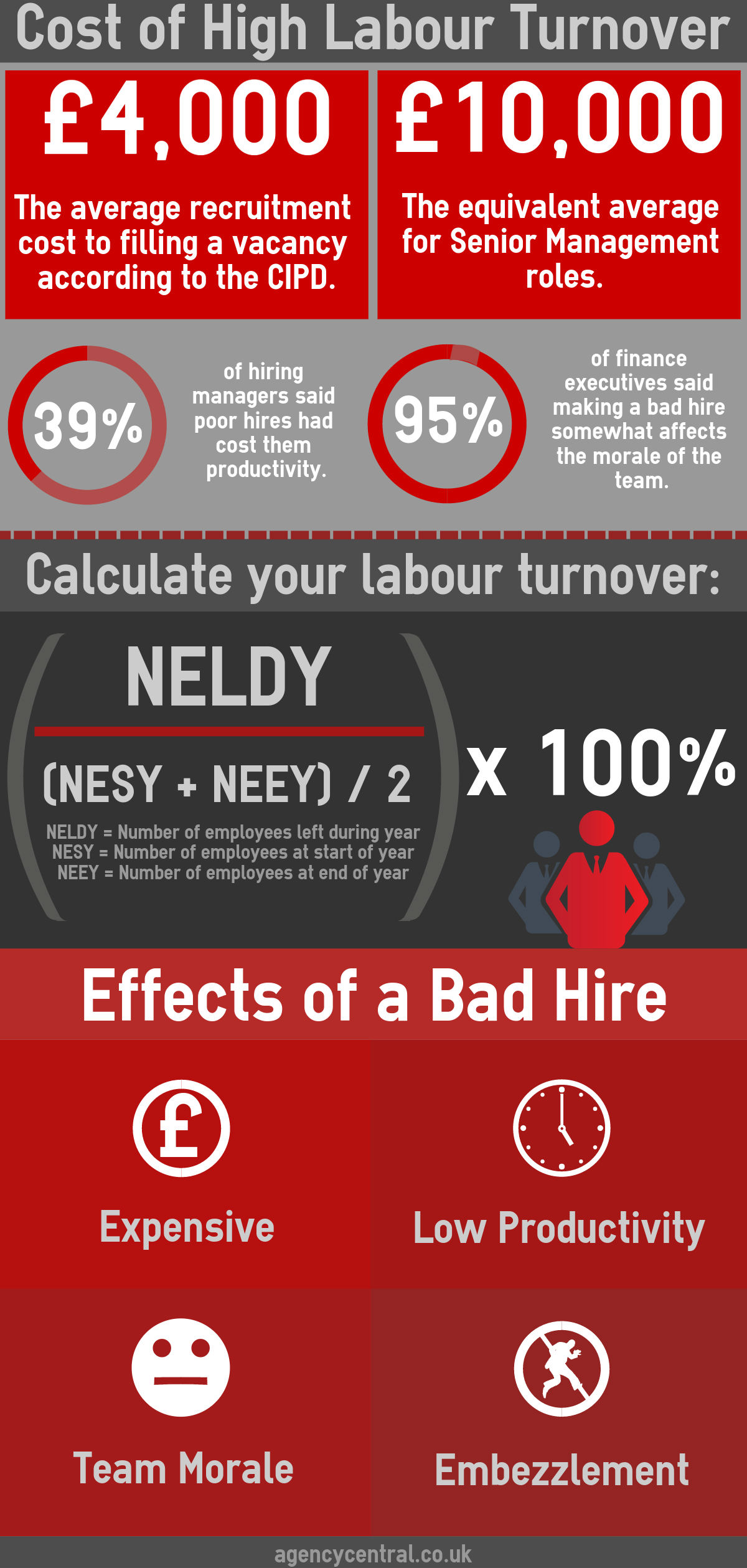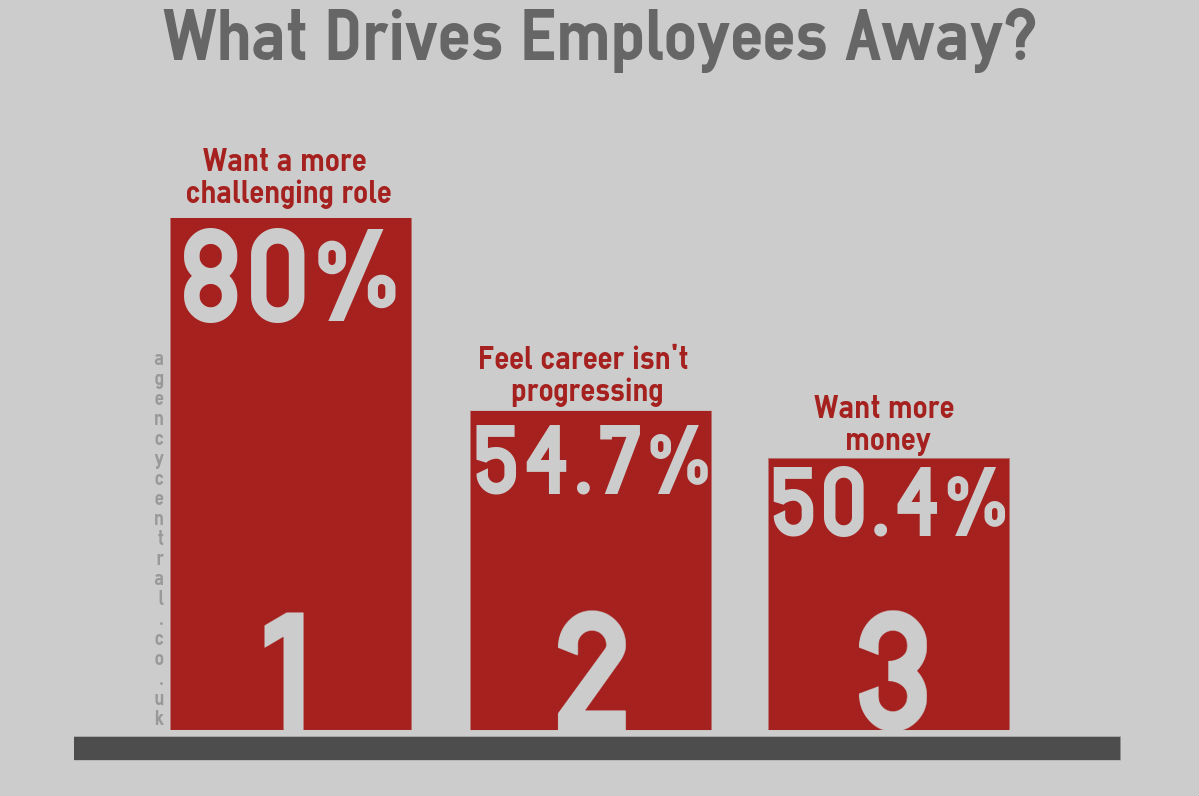In this article we’re going to investigate a question that plagues every HR department. How can hiring managers differentiate between Tom Cruise’s character in Top Gun and everyone’s favourite celebrity amphibian? Ok, perhaps not. But still, we’ve gone all-out this time to help you spot candidates’ red flags any way you can.
What is a bad hire?
We can probably all agree that we want to avoid a bad hire – it’s not a good position to be in. But how can we do that if we’re not even sure what they look like? Without trying to play a game of corporate Guess Who (because half of the characters on that board look like they might have seriously questionable pasts), we need to define what a bad hire actually is, then we know what we’re looking for here.
An underemployed person is likely to become disillusioned with their job due to a lack of new challenges or responsibilities, whilst an overemployed person will probably cause mistakes and potentially resentment amongst co-workers, who may feel that they could do the job better themselves.
What makes this even more difficult is the fact that there’s often a fine line between someone who’s a bit of a maverick – borderline genius at their job, but a bit of a handful to manage – and someone who only fulfills the second half of that equation. Before you call us out on that, think about famous examples like Steve Jobs, or even Greg House. Would you want to manage either of those people? Probably not, right? But would you want them on your team? Of course you would.
Under or over employed?
Apart from actual toxic employees, you might say that a bad hire is simply someone who’s not cut out for the job or team that they’re going to be working in. You’ve got to be realistic here, because this could involve someone with too much ambition or skill just as easily as too little. An underemployed person is likely to become disillusioned with their job due to a lack of new challenges or responsibilities, whilst an overemployed person will probably cause mistakes and potentially resentment amongst co-workers, who may feel that they could do the job better themselves.
It could be said that only a member of a company really knows what its culture is like, but this may not be true – especially if you’ve been there a while.
You’ve got to think about your specific position too – because different job roles demand different assurances about employees. If you’re looking to employ someone in the finance industry, then you’re probably going to want to carry out checks for evidence of any past fraud – and likewise, if someone’s going to be working with children or other vulnerable people, then a background check should be done as a matter of course.
Then there are the very specific factors of your business that might affect a hire’s ability to perform. Quite simply, some people are cut out for some teams/atmospheres/cultures more than others. It could be said that only a member of a company really know what its culture is like, but this may not be true – especially if you’ve been there a while. To use an idiom, it can become hard to ‘see the woods for the trees’ – because you’re seeing everything from an internal perspective.
The cost of a bad hire
If you’ve read all of that and are still wondering why you should worry so much about finding the right staff, just check out the potential costs of a bad hire:

So, now that we’ve had a think about what a bad hire actually is, and why we want to avoid them, how do we spot one? Whilst this could seem like a quest to hunt Bigfoot, there are a few best-practices you can follow in order to make this really easy. We’ve split things up into two main sections – pre-interview and the interview itself – so you can see where the different techniques fit.
Pre-interview
Things you should think about
Before you even begin to recruit, there are some things that you should consider. As well as defining what it is that you’re trying to avoid (often by defining what it is that you’re actually seeking!), you should try to learn from any mistakes that you or your company have made in the past. Have bad hires been made before, and if so, why?
How can a candidate be expected to be a good fit if they do not really understand the role they are applying for?
If you seem to have an abnormally large turnover of labour within your organisation, then it may also be time to consider honestly why that might be. It is known that certain occupations tend to have a larger turnover of staff than others. Lo and behold, these occupations tend to be relatively poorly-paid, and often involve long working hours in less than ideal conditions. It doesn’t take a Rocket Scientist to work out what might be going on. More generally, we put together the chart below to show the top three reasons that employees leave a company:

What this shows is that you can’t have your cake and eat it. Don’t expect to retain ambitious, capable employees, if your company offers no clear route for their career progression. Everyone has aspirations, and they almost never involve standing still or earning just enough to pay the bills.
Of course people have varying degrees of ambition, and it might be that the role you’re advertising just doesn’t offer much in the way of progression. Perhaps it would be perfect for a student looking to pay their way through university or someone who’s just got their qualifications and is looking to gain the experience to go with them?
Beware of an overly-capable person who could potentially go in at a much higher level. Are they just taking the job because they’re desperate for money or need to get out of their current role? Whilst you might be doing a good deed by employing them, there’s a lot of potential for resentment here.
The importance of the actual job description you produce should not be underestimated at this point. We spoke to Arvind Hickman (Construction Sector Editor at Aspermont Limited), who underlined this fact:
“The most important thing pre-interview is to ensure your job description is detailed and accurate so that candidates fully understand the role you are advertising and what is involved. During the selection process I always try to ensure that candidates are a good fit socially as well as technically. If someone doesn’t fit with the culture of your team and business, it will often cause problems with them fitting in and their engagement levels.”
The number of employers who do not produce suitable job descriptions is often surprising – but how can a candidate be expected to be a good fit if they do not understand the role they are applying for?
Pre-screening
Once you’ve finalised the job description and advertised the role, it’s time to begin screening candidates to narrow down the field. There is much more you can do here than simply look for keywords in CVs.
Many firms choose to press ahead with social media screening – right or wrong.
Social media screening
If you’ve read our recent article on social media recruitment, then you’ll know that screening candidates by sneaking a peek at their social profiles (Facebook, Twitter, etc.) is now a popular and established technique. But should it be? Is it really right that you go looking through someone’s personal life in order to see if they are ‘suitable’ for a job? Some might say that all you’re really testing by doing this is how well a candidate can use the privacy filters on their account (working on the principle that no one is without secrets).
Despite this, many firms choose to press ahead with social media screening – right or wrong. Only you can decide whether this fits your personal code of ethics – and indeed, whether you would appreciate having it done to you – but this does need to be a conscious decision.
Reference checking
Next up, there’s the time-honoured tradition of reference checking. As far as whether or not you should do this goes, the answer is a resounding ‘yes’! You’d be surprised how many firms request references for a job role but never actually check them – which is really missing a trick as far as candidate screening is concerned. It’s true that UK defamation law makes many employers reluctant to provide anything other than the most glowing of references for candidates (after all, the person concerned is no longer their problem), but there are still things you can do to get around this.
Firstly, whilst it’s important to listen to what the referee is saying, you also need to think about what they aren’t telling you. Although it will be difficult to get a face-to-face appointment in many cases, if this is possible then it would definitely be worthwhile. Body language and other methods of non-verbal communication are incredibly powerful, and could speak volumes about the way a candidate is really perceived.
You should also be smart in the way you ask questions when it comes to referencing. This really depends on how the conversation flows, so again, face-to-face or on the telephone are the best ways to do this. You need to try to get the referee talking – so ask open questions and let them go wild.
Interview time
So, you’ve thought everything out, you’ve screened and selected your candidates, and you’ve scheduled their interviews – what now? Well, it’s time to prepare to meet them of course. If you’re a newbie at the interviewing game, then it goes without saying that it’s probably worth having a more experienced member of staff sit in on them with you, as it can be daunting, and you will undoubtedly benefit from their experience
With the scarcity of jobs these days, it’s easy to forget that the labour market is a two-sided equation, but it’s still very possible to lose a good candidate by coming across badly during the interview process.
Interview technique
Again, the most important thing for you to do is to be honest about the job. Don’t mislead the candidate into thinking it’s something it’s not. This will not pay off. For example, if the role is purely office-based, don’t make out that the candidate will be working across a range of environments. If they will be expected to work outside of normal office hours, then make that clear. Everyone needs to be reading off the same page when it comes to the job role.
The confrontational approach
There are a number of strategies you can pursue when interviewing a candidate, and each has its own pros and cons. Some interviewers like to put a candidate under pressure in order to see how they behave in that type of situation. This ‘bad cop’ approach could potentially work well in many types of situation, and it will provide a good background to show up any red flags, but there are considerable problems with it too.
Firstly, the employee may not want to work for you! With the scarcity of jobs these days, it’s easy to forget that the labour market is a two-sided equation, but it’s still very possible to lose a good candidate by coming across badly during the interview process. This is probably more true for the better candidates too – who tend to have more choice when it comes to job selection.
Secondly, by putting the candidate on a defensive footing, you may find that they ‘clam up’ somewhat and you fail to get the information you desire. Go through this process with the whole shortlist, and well do the maths. You’ll achieve nothing.
The conversational approach
Far better is a more relaxed approach to the whole interview process. This should be a confidence-building conversational approach, which will allow you to discuss key issues in a professional and adult manner. This is the approach we recommend – and you’re far more likely to spot any of those all-important red flags this way.
You should be setting off early to allow plenty of time to sit in traffic, catch a rail-replacement bus, or avoid the meteorite impact on the M25; whatever it might be that would otherwise make you late.
With this in mind, we’re going to go through some of the most important things that you should look out for during an interview. Do keep in mind, however, the warning from the beginning of this article – that there’s a fine line between someone who’s a bit of a maverick and someone who is just plain unmanageable. Much of this distinction might come down to the quality of the person’s work in many cases – with this benefit being weighed against the ‘cost’ of having to manage them.
Red flags
No excuse for being late
People are late sometimes; we get that. However, when attending a job interview, there is seldom an excuse for it. You should be setting off early to allow plenty of time to sit in traffic, catch a rail-replacement bus, or avoid the meteorite impact on the M25; whatever it might be that would otherwise make you late. An interview is the type of one-off event that you shouldn’t be late for. Better to be 30 minutes early than 10 minutes late. If someone is late for their interview without an earth-shatteringly good excuse, then we’d say that that’s a pretty big red flag.
Have they done their homework?
Everyone, even the resident maverick/evil genius should be researching a company before they get to their interview. We’re not talking about poring over the detailed financial data of a publicly-listed supermarket firm in order to apply as a part-time Checkout Assistant (although why not?), but the candidate should be at least familiar with things like what your company does, a little of its history, and where it’s based. If nothing else, they should realise that this is an easy way for them to shine. If they don’t do this, then our telescopes spy a large crimson banner on the horizon.
Do they speak ill of former employers?
As with those who have departed this mortal coil, you are not supposed to say negative things about your former employers. This has more to do with appearing loyal and trustworthy than it does respect and tradition, and in many cases, the fact that someone might be doing this should be regarded as them hoisting a big red flag towards the heavens for all to see.
But we’re going to go out on a limb here. What about the other cases? Has every employer you’ve ever had commanded (or even deserved) your respect? We’d say that the flag could really be more of a pink than a red in this case – or perhaps even a nice shade of burnt sienna. If someone feels genuinely mistreated by a former employer, then of course they want the world to know about it. Saying so at an interview might not be the most sensible or graceful thing in the world, but if you were putting out feelers into the past employment of an otherwise good candidate and seem to have touched a raw nerve, then we wouldn’t automatically call it a deal-breaker.
Everyone needs to face up to responsibility at some point
One thing is true of everyone. We all make mistakes. No one is without exception, and if they tell you they are, then they’re lying. What separates us is the way in which we deal with and learn from those mistakes. This is where the classic interview question ‘tell us about a time you made a mistake at work’ comes from. Whilst this has now become a bit of a cliche (meaning of course that smart candidates prepare for it), it still has value in showing that the person concerned has humility, and views their career as a learning process. Whilst many maverick personalities can have a tendency to be a little big headed at times, a complete inability to take responsibility for one’s own mistakes should be like a vermillion tablecloth attached to a vigorously-waved broom for an employer.
What’s their employment history like?
We’ve already touched on employment history when we looked at a candidate’s opinion of their former employers, but it’s also worth considering this from a second perspective. Gaps in someone’s employment history, or a number of short tenures could be indicative of someone who’s been dismissed in the past, or who has a history of job-hopping – neither of which will be particularly attractive to you as an employer. This will require discussion with the candidate, as well as a good deal of thought on your part.
You definitely should investigate this though – because in some instances these types of irregularities could have been caused by the unavoidable personal circumstances of an otherwise great employee. Even if they weren’t, who’s to say that they didn’t spend that eight month gap going on a round the world voyage of self-discovery that’s left them a better, more capable person? There’s more than one way to skin a cat, after all.
Conclusion
Hopefully, at this point you now feel you’ve got a better grasp of what separates a bad hire from someone who’s just a bit of a maverick, and you feel more confident in being able to uncover these traits. This isn’t a simple topic, and it’s something that will often necessitate the type of seat of the pants intuition that only comes with experience, before you’ll really begin to get a grasp of it.
For that reason, we’d reiterate that there really is no substitute for having an experienced interviewer help you out if you’re new to the whole process. Just as you want to find candidates who view every day as a school day, you should embody that maxim yourself as much as you can. Good luck out there, and try to avoid the anthropomorphic frogs!



